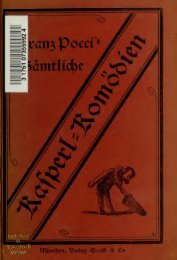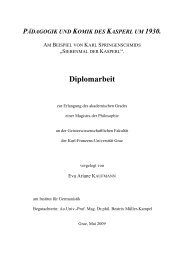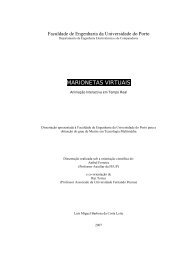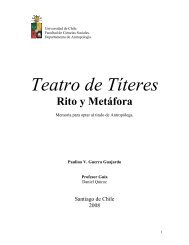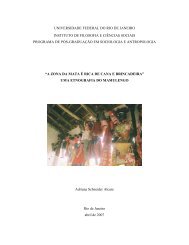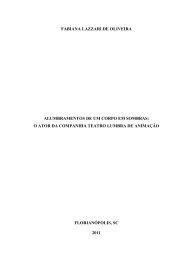ABSTRACT Title of Dissertation: THE PHENOMENOLOGY OF ...
ABSTRACT Title of Dissertation: THE PHENOMENOLOGY OF ...
ABSTRACT Title of Dissertation: THE PHENOMENOLOGY OF ...
Create successful ePaper yourself
Turn your PDF publications into a flip-book with our unique Google optimized e-Paper software.
The criminal acts and dishonesty depicted in many <strong>of</strong> minstrelsy’s counterfeit<br />
images <strong>of</strong> black life have been replaced by equally vague references to a Jolly Little<br />
Nigger who “one day got very mellow” and was hauled before the local magistrate. It<br />
pales in comparison to a song like “Jimmy Crack Corn or The Blue Tail Fly” (1846),<br />
which describes a slave who murders his master and fools the court into believing a<br />
“Blue Tail Fly” is responsible. 59 Instead <strong>of</strong> a parody <strong>of</strong> police authority or even a more<br />
pr<strong>of</strong>ound example <strong>of</strong> antisocial behavior, “Jolly Little Nigger” depicts an alcoholic, who<br />
was merry and known for his wit, running afoul <strong>of</strong> the law when his drinking gets<br />
excessive. The conclusion is thematically a very simple moral, advising the listener to be<br />
temperate. The Bullock/D’Arc troupe has adapted the Foster-inspired essence <strong>of</strong> late<br />
nineteenth-century minstrel music, and toned down the more morally problematic<br />
qualities <strong>of</strong> blackface texts.<br />
Granted, the structure suggests an attempt to capture a second essence <strong>of</strong> Foster’s<br />
music. In songs like “Nelly was a Lady,” Foster criticized slavery, deviating from the<br />
seemingly proslavery attitude <strong>of</strong> other minstrel songs. In “Jolly Little Nigger,” the<br />
marionettes challenge simplistic depictions <strong>of</strong> the comic Negro minstrel. The “ha, ha,<br />
ha” refrain creates an expectation for the audience that runs contrary to the theme <strong>of</strong> the<br />
song. When told <strong>of</strong> an individual who is “happy as a king,” the listener imagines the<br />
laughter as the joyous exaltation <strong>of</strong> a genuinely happy black character, a nearly<br />
stereotypical example <strong>of</strong> the wide-eyed, happy plantation slaves depicted throughout<br />
minstrelsy. Yet as that listener discovers the circumstances <strong>of</strong> the “Jolly Little Nigger’s”<br />
life, he/she sees that his “ha, ha, ha,” is no proclamation <strong>of</strong> joy, but the mad, drunken<br />
59 William J. Mahar, Behind the Burt Cork Mask (Chicago: University <strong>of</strong> Illinois, 1999), 242-243.<br />
46



